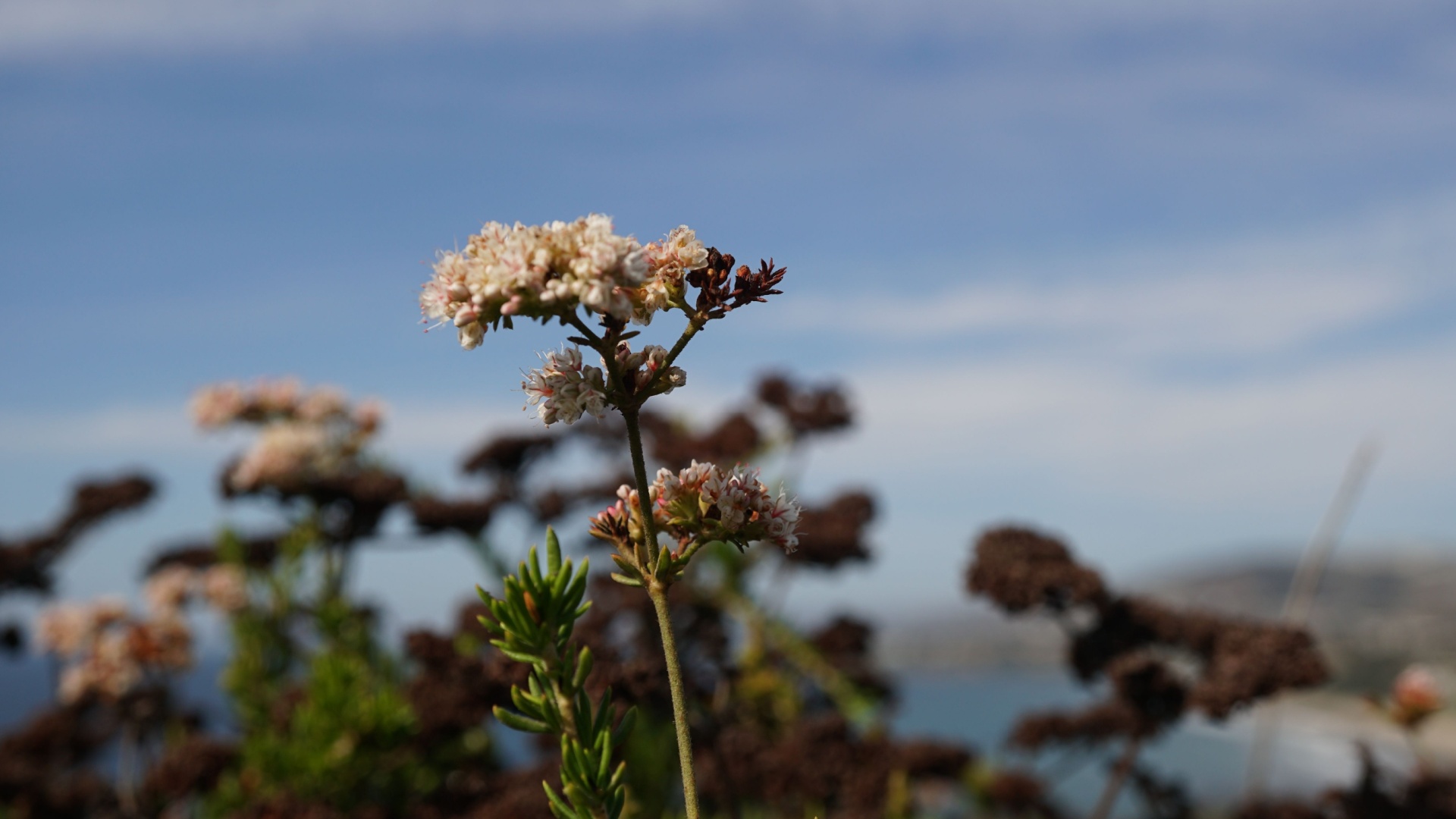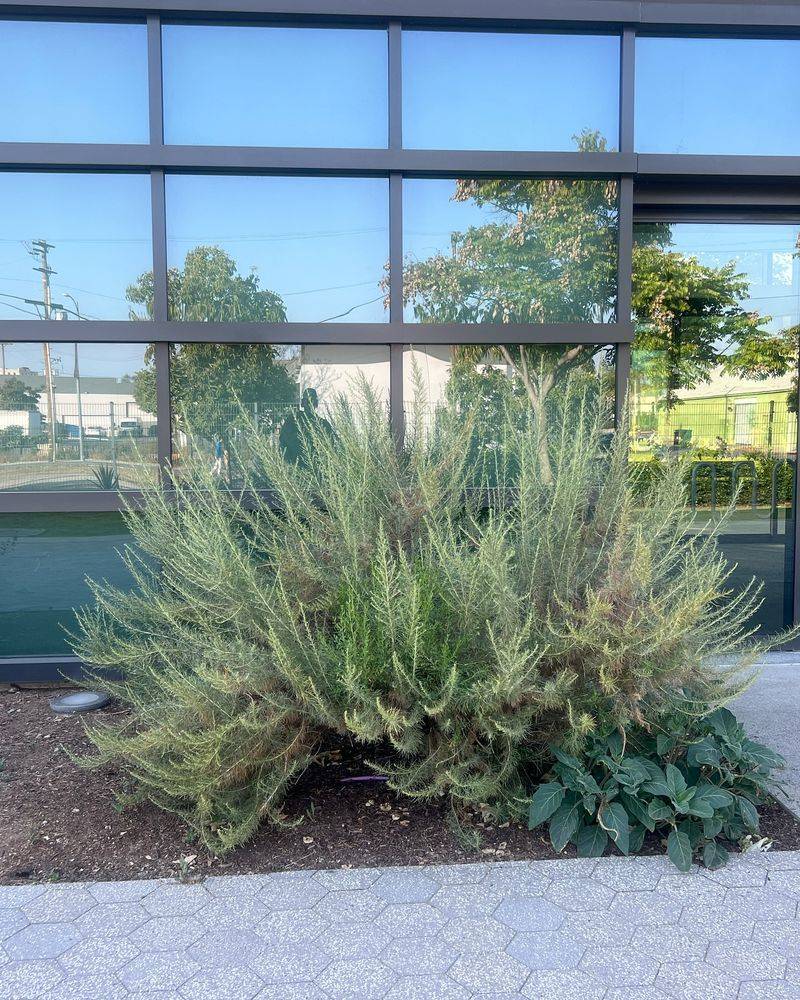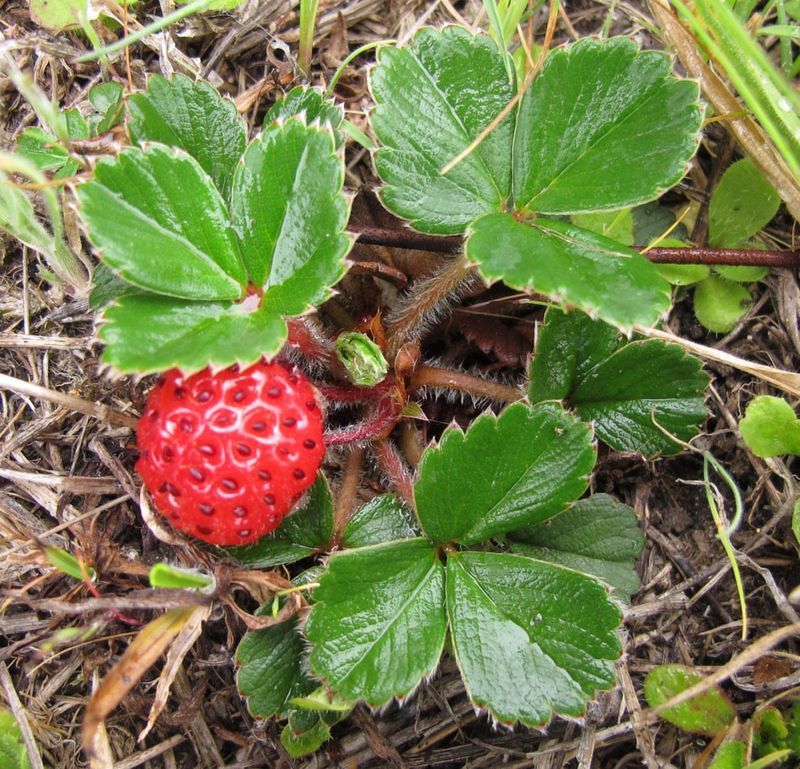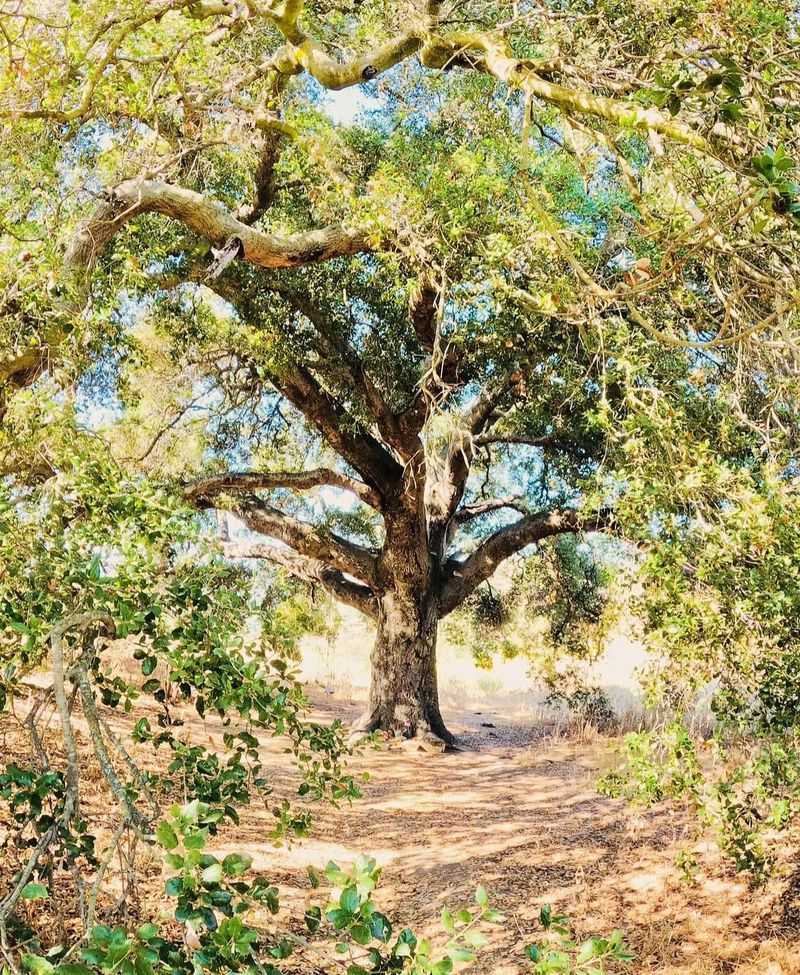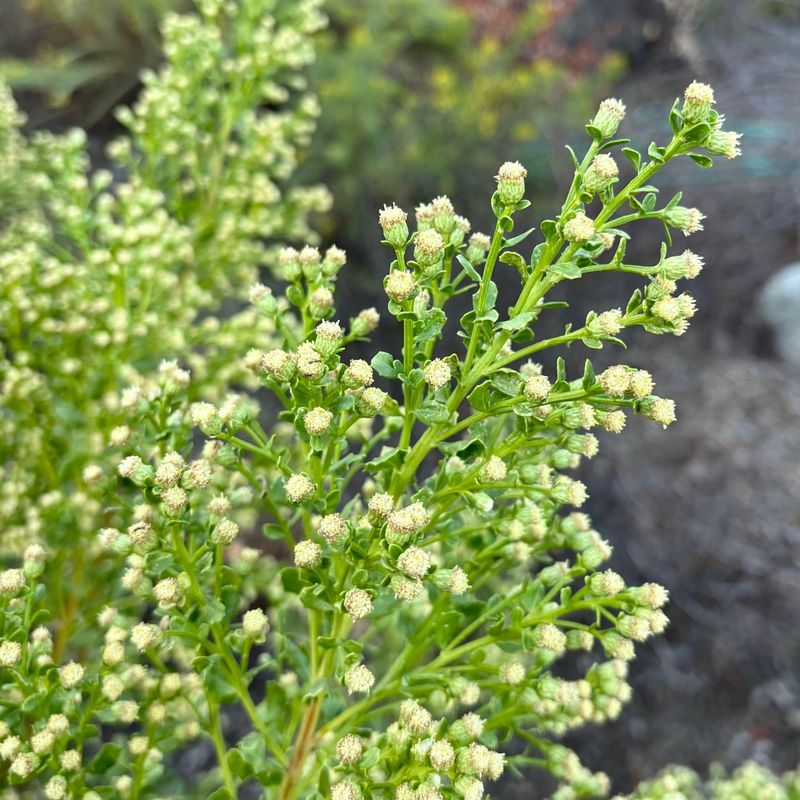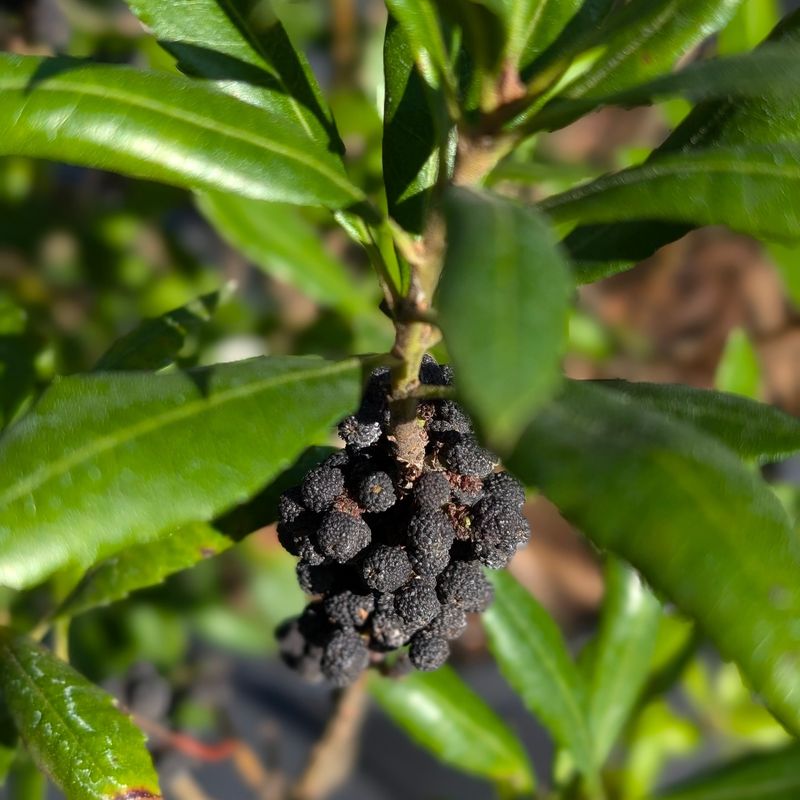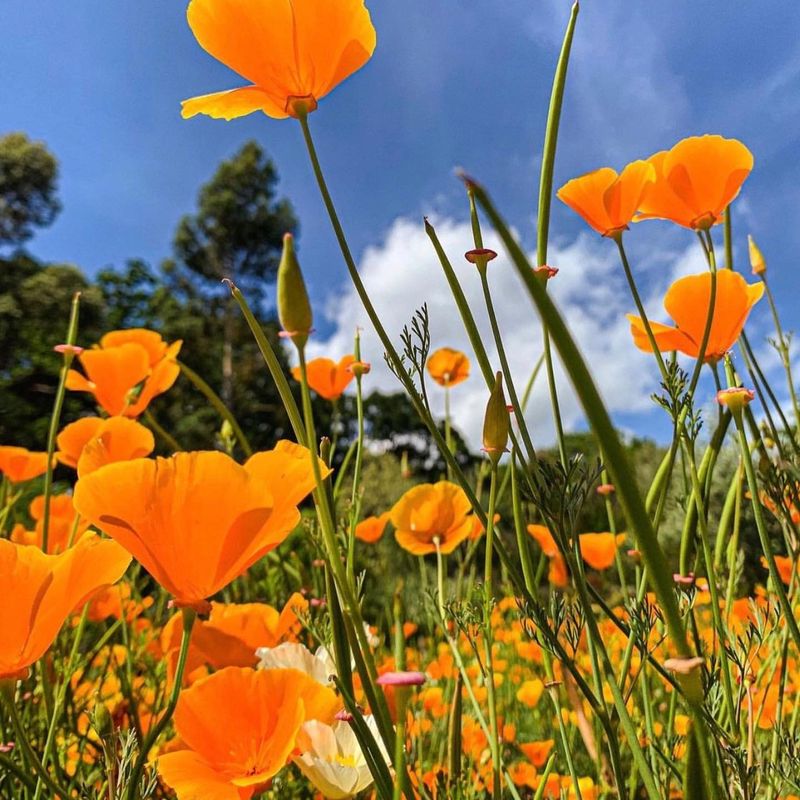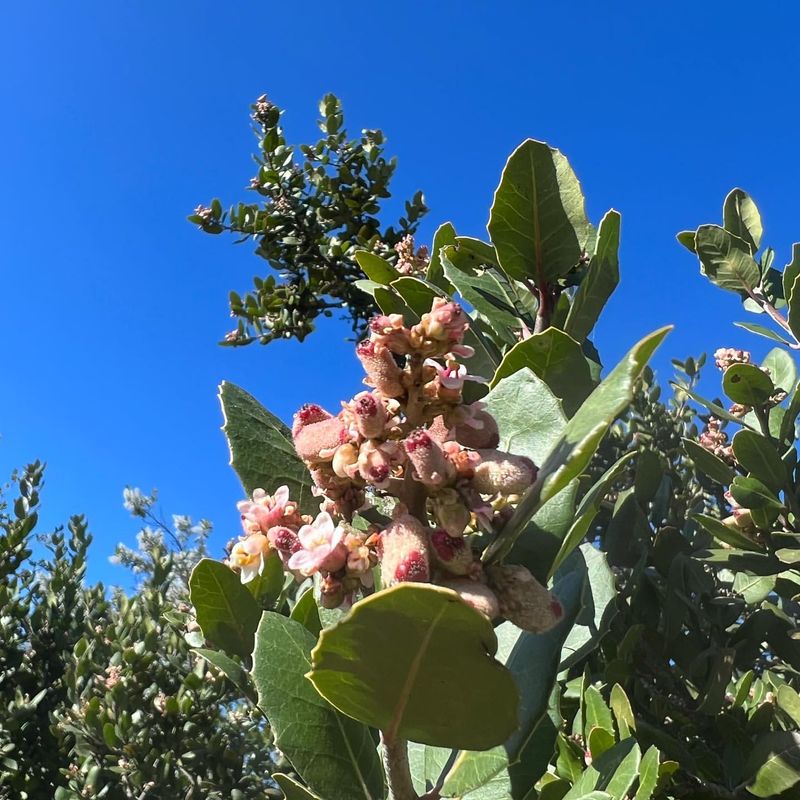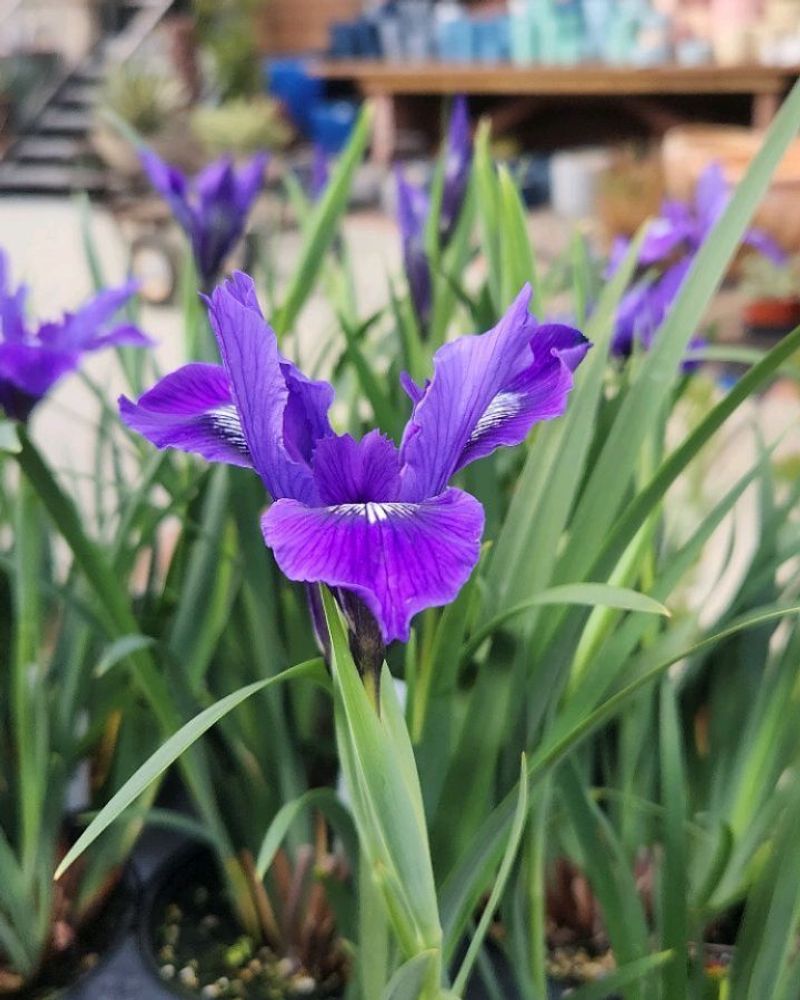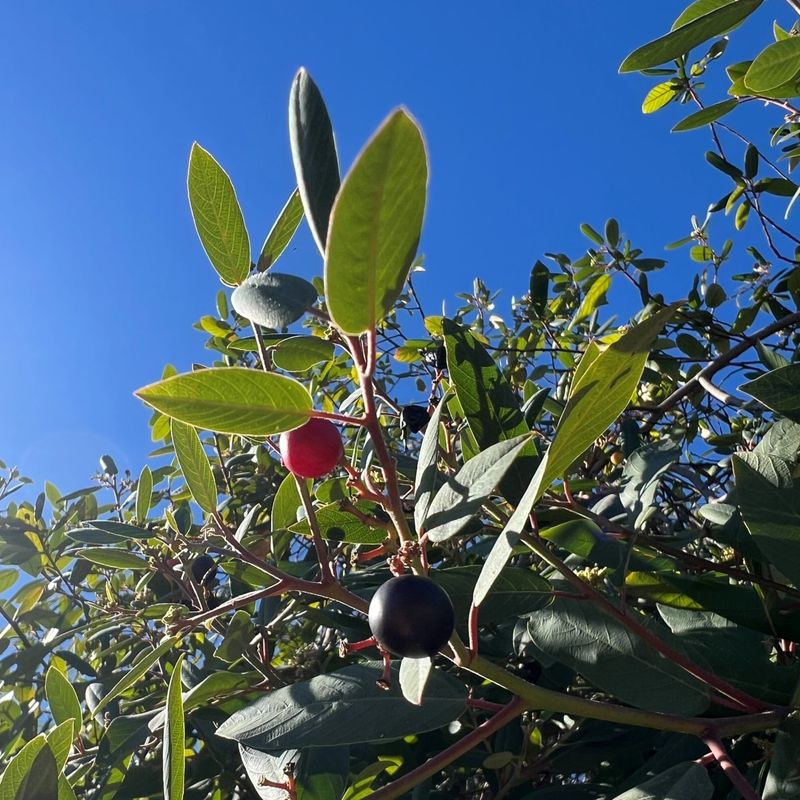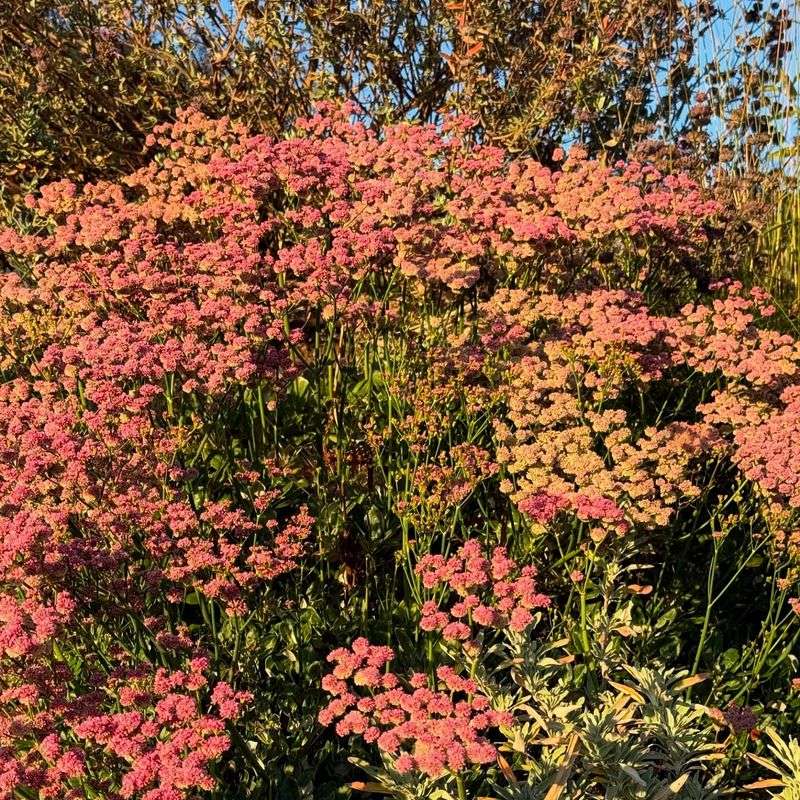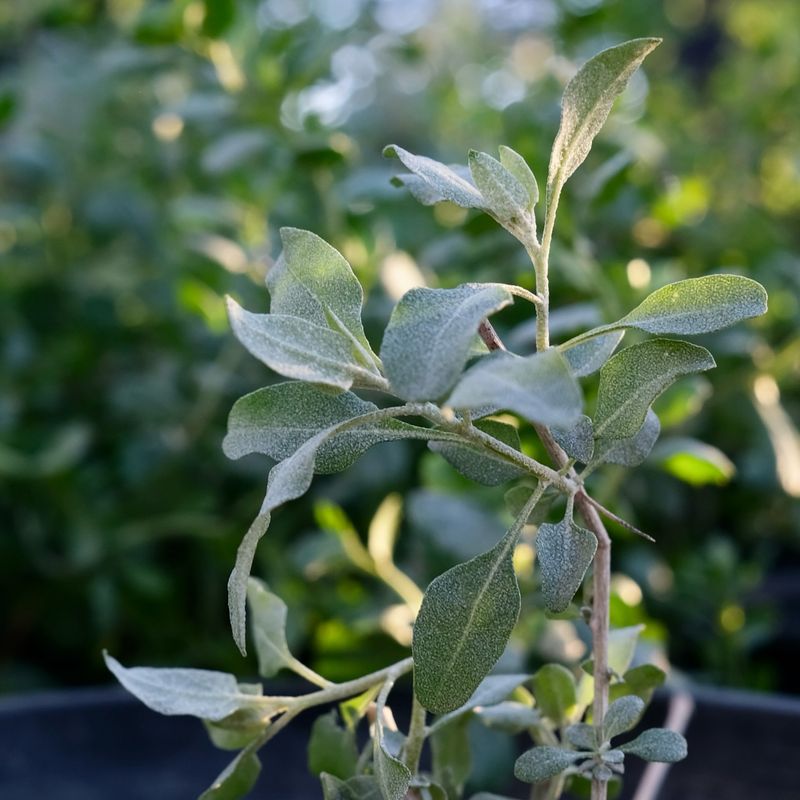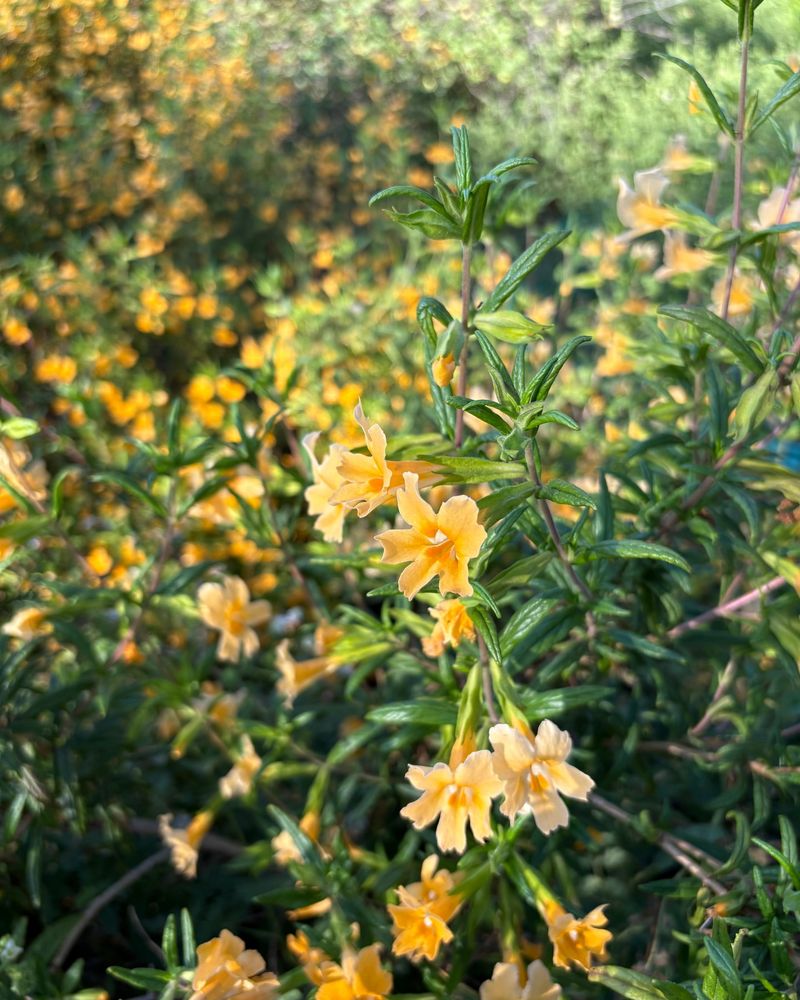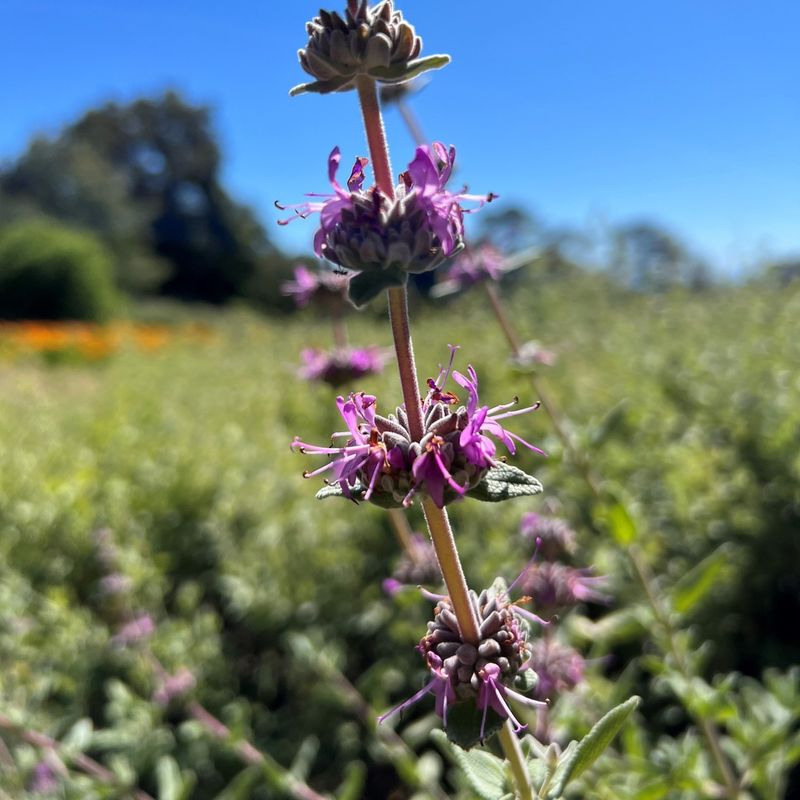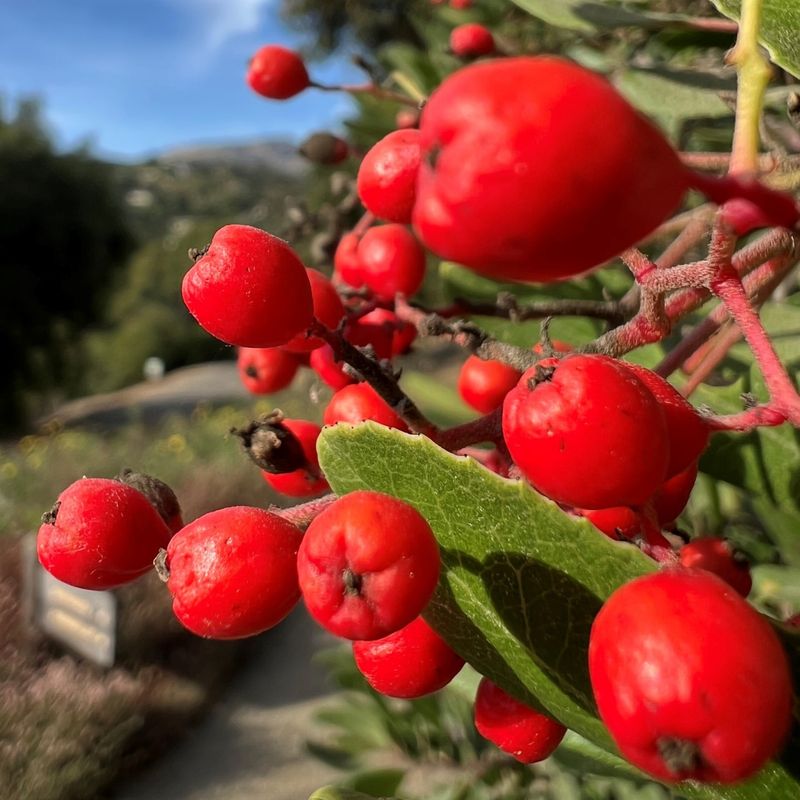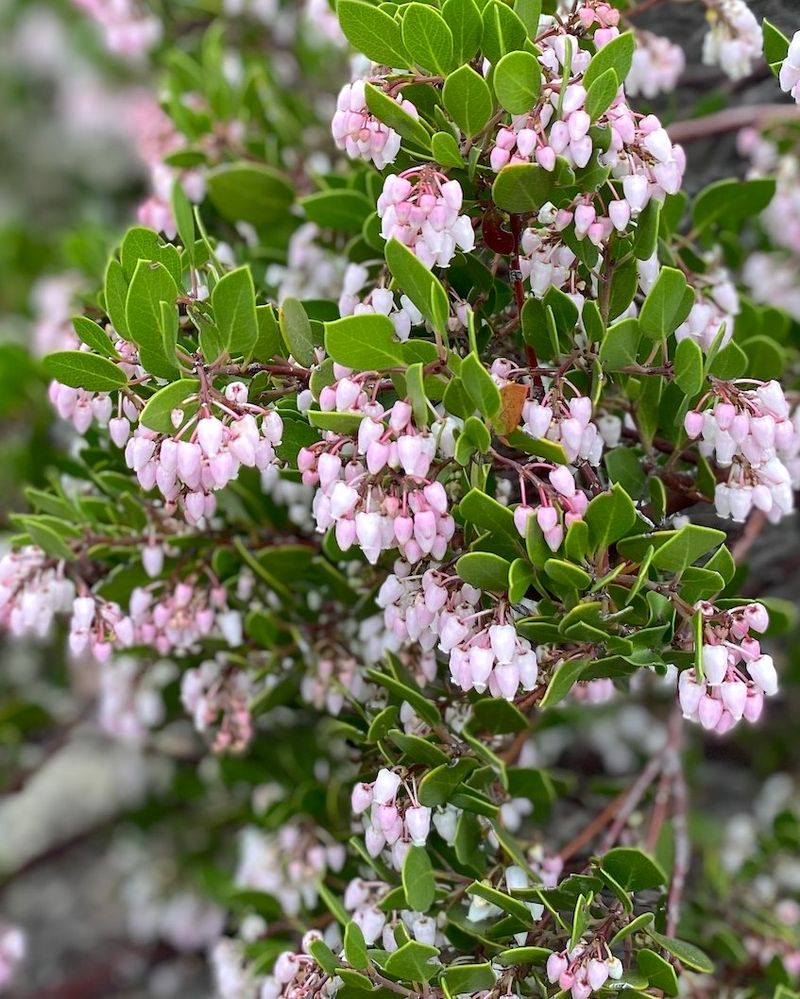California’s coastline offers a unique growing environment where salt air, sunshine, and cool breezes create special conditions for plants. Many species actually thrive in these coastal zones, having adapted to withstand salty conditions and constant winds.
Gardening near the ocean presents challenges, but choosing the right plants can create a beautiful, low-maintenance landscape that embraces coastal living.
1. Seaside Daisy (Erigeron glaucus)
Native to California’s coastal bluffs, this cheerful perennial produces lavender-blue flowers that dance in ocean breezes. The fuzzy, gray-green foliage forms a dense mat that helps prevent erosion on slopes.
Seaside daisies bloom nearly year-round in mild coastal areas, attracting butterflies and bees to your garden. They’re incredibly drought-tolerant once established and can handle salt spray that would kill less hardy plants.
2. California Sagebrush (Artemisia californica)
Walk along any coastal trail in Southern California and you’ll catch the distinctive aromatic scent of this silvery-gray shrub. California sagebrush forms the backbone of coastal sage scrub communities, providing essential habitat for native wildlife.
Its feathery foliage sways gracefully in sea breezes, releasing oils that perfume the air. Extremely drought-tolerant and fire-adapted, this plant thrives in poor soils where other species struggle.
3. Beach Strawberry (Fragaria chiloensis)
Imagine enjoying sweet, wild strawberries grown in your own coastal garden! Beach strawberry creates a lush green carpet with glossy leaves and white flowers that develop into small, intensely flavored fruits.
Originally native to coastal areas from California to Alaska, this ground cover spreads by runners, making it perfect for erosion control on sandy slopes. Birds love the berries, but you’ll want to sample some too – they’re smaller but often more flavorful than store-bought varieties.
4. Coast Live Oak (Quercus agrifolia)
Majestic sentinels of the California coast, these evergreen oaks develop wonderfully twisted, wind-sculpted forms when exposed to constant sea breezes. Their dense canopies provide critical habitat for birds and wildlife even in harsh coastal environments.
Coast live oaks can live for centuries, developing character and presence unlike any other coastal tree. The leathery, holly-like leaves have special adaptations to prevent water loss during dry summers and windy conditions, making them remarkably drought-resistant once established.
5. Coyote Bush (Baccharis pilularis)
Often overlooked but incredibly valuable, coyote bush creates the foundation of many coastal plant communities. This tough native shrub produces masses of fluffy white seed heads in fall that look like snow dusting its branches.
Adaptable to almost any soil condition, coyote bush stabilizes dunes and slopes while providing food and shelter for native insects and birds. Male and female flowers grow on separate plants, with the females producing the showiest displays in autumn.
6. Pacific Wax Myrtle (Morella californica)
Formerly known as Myrica californica, this attractive evergreen shrub forms dense screens perfect for privacy in coastal gardens. The glossy, aromatic leaves release a pleasant fragrance when brushed against or crushed.
Female plants produce interesting purple berries covered with a waxy coating that birds adore. Growing rapidly to 10-30 feet tall, Pacific wax myrtle makes an excellent alternative to non-native hedge plants, thriving in the salt air where many other privacy screens would fail.
7. Monterey Cypress (Hesperocyparis macrocarpa)
Nothing symbolizes the California coast quite like the dramatic silhouette of Monterey cypress trees. Naturally occurring only in two small groves near Carmel, these iconic trees have been planted all along the coast for their extraordinary wind resistance.
Over time, coastal winds sculpt them into flat-topped, horizontal forms that seem to embody the wild spirit of the Pacific. Though naturally rare, they’ve become cultural landmarks defining the aesthetic of places like 17-Mile Drive and Point Lobos.
8. California Poppy (Eschscholzia californica)
Our vibrant state flower thrives in coastal areas, where its golden-orange blooms create spectacular displays against blue ocean backdrops. These cheerful natives close their cup-shaped flowers at night and on cloudy days, reopening when the sun returns.
California poppies self-seed readily, establishing sustainable populations that return year after year. Their finely divided, blue-green foliage remains attractive even when the plants aren’t blooming, and they’re remarkably drought-tolerant once established.
9. Lemonade Berry (Rhus integrifolia)
Named for its tart, lemonade-flavored berries traditionally used by Native Americans, this evergreen shrub creates excellent privacy screens in coastal gardens. The leathery, oval leaves have special adaptations that help them conserve water even in salty, windy conditions.
Pink-white flower clusters appear in late winter, developing into sticky, red fruits by summer. Birds feast on the berries while humans can make a refreshing drink by soaking them in water. Lemonade berry’s dense growth provides valuable shelter for wildlife in coastal areas.
10. Douglas Iris (Iris douglasiana)
Carpeting coastal meadows with purple-blue blooms each spring, Douglas iris creates some of California’s most magical wildflower displays. The sword-like leaves remain evergreen year-round, providing structure even when the plants aren’t flowering.
Unlike many garden irises, this native species requires no special care once established, thriving in the foggy conditions common along the coast. Hummingbirds and butterflies visit the flowers, while the rhizomatous growth habit helps stabilize soil on slopes.
11. Coffeeberry (Frangula californica)
Don’t expect to brew your morning cup from this plant! Coffeeberry gets its name from the coffee-like berries that ripen from green to red to black through the summer months. Birds absolutely devour these fruits, making it a top choice for wildlife gardens.
The glossy evergreen leaves have a leathery texture that helps them withstand coastal conditions. Extremely adaptable, coffeeberry grows in sun or shade, tolerates drought once established, and needs virtually no maintenance. Native plant enthusiasts consider it an essential component of coastal gardens.
12. Coastal Buckwheat (Eriogonum latifolium)
Bees buzz with excitement around the pale pink flower clusters of coastal buckwheat all summer long. This native perennial forms neat mounds of silvery-green foliage that contrast beautifully with its pom-pom blooms.
As flowers age, they turn a rusty reddish-brown that persists through winter, providing year-round interest and seeds for birds. Extremely drought-tolerant and salt-resistant, coastal buckwheat thrives in poor soils where other plants struggle, making it perfect for challenging oceanfront sites.
13. Salt Bush (Atriplex lentiformis)
Salt bush earned its name from an amazing ability to actually excrete salt through special glands on its leaves! This adaptation makes it one of the most salt-tolerant native plants for beachfront properties where ocean spray regularly coats everything.
The silvery-gray foliage creates a beautiful contrast against other garden plants. Growing quickly to form a large shrub, salt bush provides excellent screening and windbreak protection for more delicate plants. Native Americans used various Atriplex species for food and medicine.
14. Sticky Monkey Flower (Diplacus aurantiacus)
Hummingbirds can’t resist the tubular orange-red blooms of sticky monkey flower! Named for its uniquely shaped flowers and slightly sticky leaves, this coastal native puts on a spectacular spring display that can continue through summer with proper conditions.
The resinous foliage has a pleasant fragrance when touched. Growing naturally on coastal slopes throughout California, sticky monkey flower has adapted to thrive in the unique conditions of ocean-influenced environments. Various cultivars offer flower colors ranging from yellow to deep red.
15. Coastal Sage (Salvia leucophylla)
Purple sage creates some of the most dramatic displays along California’s coastal slopes. The lavender flower spikes rise above silvery-gray aromatic foliage, attracting bees, butterflies, and hummingbirds in droves during spring and early summer.
The leaves contain aromatic oils that release their fragrance whenever the wind blows or someone brushes against the plant. Extremely drought-tolerant, coastal sage requires almost no supplemental water once established. In nature, it often grows alongside California sagebrush in coastal sage scrub communities.
16. Toyon (Heteromeles arbutifolia)
Sometimes called California Holly, toyon produces bright red berries in winter that gave Hollywood its name when early settlers were reminded of traditional holly. This evergreen shrub can grow into a small tree over time, developing beautiful twisted branches.
White flower clusters appear in summer, attracting beneficial insects. By December, the plant is covered with festive red berries that provide crucial winter food for birds. Toyon’s leathery leaves help it withstand coastal conditions, and it develops remarkable drought tolerance once established.
17. Manzanita (Arctostaphylos species)
With smooth cinnamon-colored bark that peels like paper and twisted branches that seem to dance in coastal winds, manzanitas add year-round sculptural beauty to seaside gardens. Several species and cultivars thrive in coastal conditions, particularly Arctostaphylos hookeri and A. uva-ursi.
Tiny urn-shaped flowers appear in winter, providing rare nectar for hummingbirds and bees during the coldest months. The name “manzanita” means “little apple” in Spanish, referring to the small, apple-like fruits that follow the flowers.

